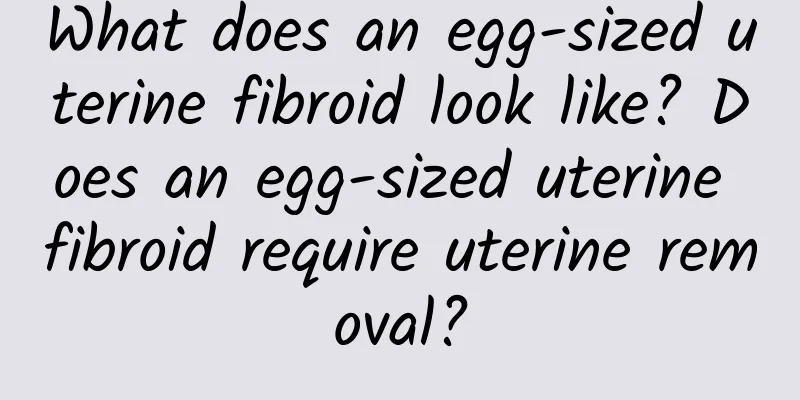Polycystic ovary disease can lead to infertility. Eat less eggs in a smart diet.

|
Eggs are rich in nutritional value and are one of the main sources of high-quality protein. However, experts warn that egg yolks are high in cholesterol, and eggs and their related products tend to induce male hormones. Long-term and excessive intake can easily cause obesity, worsen polycystic ovary syndrome, affect ovulation, and ultimately lead to infertility. The first step to prevent PCOS is to get rid of obesity Polycystic ovary is caused by the inability of mature eggs to be discharged from the ovaries normally, resulting in the formation of follicular cysts of varying sizes around the ovaries. This not only causes irregular menstrual cycles, but the ovarian cysts also continuously secrete male hormones, leading to obesity. Both menstrual disorders and obesity can easily lead to infertility. Other clinical manifestations of PCOS include increased body hair, severe hair loss, acne, high blood sugar, and even diabetes. Eat a balanced diet to control your weight, and eat less eggs Obstetrician and gynecologist Pan Junheng said that the most important thing to prevent or improve polycystic ovary syndrome is to "avoid obesity." In addition to developing regular exercise habits, female friends are advised to take in the six major nutrients in a balanced manner, eat meals at regular times and in regular amounts, eat more fresh ingredients and less processed foods, eat a diet with less oil, sugar, salt and more fiber, use less frying when cooking, and use vegetable oil instead of animal oil for stir-frying, especially reduce the intake of high-cholesterol shell seafood and egg yolks. Patients with polycystic ovary syndrome should eat less eggs or related products on a daily basis to avoid inducing the secretion of large amounts of male hormones, which will aggravate the symptoms; try to choose whole grains as staple foods and reduce refined sugars. More importantly, it is important to manage your weight. Overweight patients are advised to lose 5% to 10% of their body weight. While eating a healthy diet, they can choose to do interval exercise combined with strength training to speed up calorie consumption and increase muscle mass. Normal weight is BMI = 18.5 to 24.0. Eggs are rich in nutrients, but they are high in cholesterol and can stimulate the secretion of male hormones. Patients with polycystic ovary disease should reduce their consumption. Obstetrician and gynecologist Pan Junheng said that the most important thing to prevent or improve infertility caused by polycystic ovary syndrome is to "avoid obesity." The picture shows a pregnant woman having a prenatal check-up. (Photo provided by Dr. Pan Junheng) Regarding diet control, taking an adult weighing 60 kg as an example, the daily calorie intake is 1500 calories. It is recommended that breakfast be controlled at around 300 calories, and lunch and dinner need to take into account the balance of carbohydrates, protein and fiber, as demonstrated below. It should be noted that those who eat out should avoid heavy-flavored dishes such as satay, sweet and sour, and starchy dishes, and choose 1 to 2 more vegetables to ensure fiber intake. 【Lunch】
【dessert】 1 cup (260ml) of unsweetened or lightly sweetened soy milk; 1/2 roasted sweet potato or boiled corn. Pair it with a serving of fresh fruit, the amount is equivalent to a fist or 1/2 bowl. 【dinner】
|
<<: 8 high-fiber foods to help you get rid of belly fat
>>: Say goodbye to sagging! 2-action chest elasticity UP
Recommend
What foods are good for patients with ovarian cysts?
What kind of food is better for patients with ova...
What causes pelvic inflammatory disease?
Pelvic inflammatory disease is a common reproduct...
Will cervical pregnancy lead to spontaneous abortion? Will there be bleeding?
Cervical pregnancy may lead to spontaneous aborti...
What should you pay attention to after curettage? Pay attention to these 4 points
Curettage can cause great damage to the uterus, s...
How big should an ovarian cyst be before surgery?
At what size should an ovarian cyst be operated o...
What are the symptoms of pelvic peritonitis
In recent years, as the pace of life of female fr...
Can't I have a painless abortion if I have gynecological inflammation?
Women with gynecological inflammation are advised...
Does low progesterone injection cure abortion?
Many pregnant mothers are very worried when they ...
How to treat multiple uterine fibroids? What are the common treatment methods of traditional Chinese medicine?
What is the TCM treatment method for multiple ute...
What to do if there is a suction leak during abortion
Some complications may occur during artificial ab...
What are the dangers of thick endometrium?
What are the dangers of endometrial thickening? A...
What to do if uterine effusion occurs?
It is very necessary to check for uterine effusio...
Salads must be low in calories? Be careful, there are mines here.
In order to lose weight successfully, many beauty...
Should I do a checkup after menopause?
"In life, most women believe that after meno...
Will pelvic effusion lead to less menstruation? What are the dangers?
Pelvic effusion is a late stage of gynecological ...









